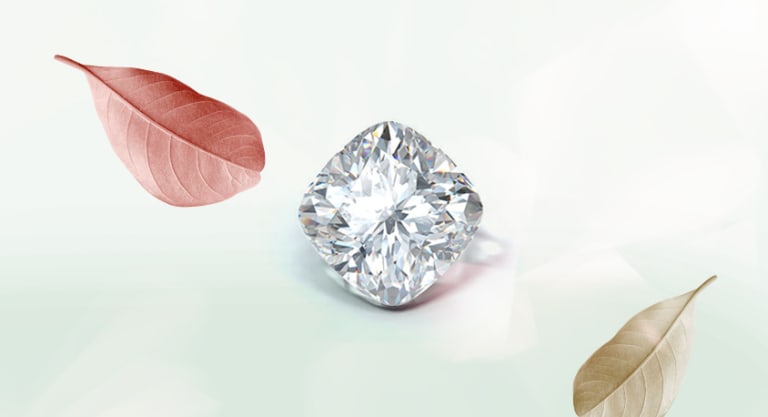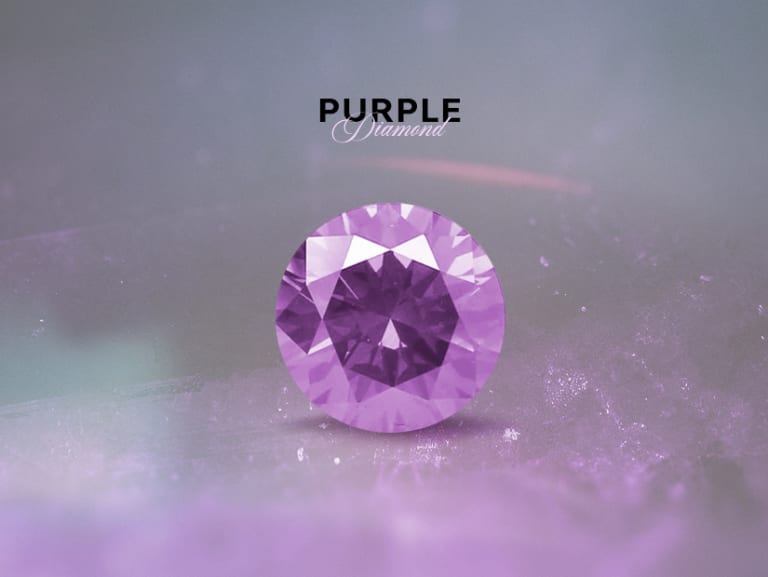Ultimate Buying Guide of Round Cut Diamond
Listen & Feel Full Article…
What is Round Cut Diamond?
The round cut diamond is the most popular shape, accounting for roughly three-quarters of all diamond sales worldwide. Round cut diamonds have more fire, brilliance, and scintillation than other shapes.
The perfect shape for round cut diamonds results from generations of research into round cut diamond cuts. Round diamond cut have undergone six ideal cuts throughout history, all working toward today’s brilliant round cut diamonds. Some of these ideal cuts are:
- Practical Fine Cut
- Parker Brilliant
- Ideal Brilliant
- Eulitz Brilliant
- American Standard
Each of these cuts has a unique level of brilliance, including unique crown heights, pavilion depths, table diameters, girdle thicknesses, crown angles, and pavilion angles.
The 4C’s of Round Cut Diamonds
Cut
When grading a round brilliant cut diamond, one of the most important factors is the cut. The quality of the cut heavily impacts the quality of light performance of a diamond since its brilliance makes it so unique and appealing. A diamond’s grading indicates how well it is proportioned and aesthetically pleasing and, therefore, how well it will reflect light and provide brilliance.
Round brilliant cut diamonds are graded from Excellent to Poor by the GIA. While the GIA cut grade is essential. The cut isn’t the only thing to consider. Around 55% of GIA-certified round cut diamonds are Excellent cuts. Based on other attributes, you can find a wide range within that grade, from stunning to mediocre.
An excellent quality cut shouldn’t be too shallow or too deep. Light escapes through the pavilion’s sides when the cut is too shallow, causing the diamond to lack brilliance and fire. Light exits through a diamond’s bottom when cut too deep, causing a dull appearance. Light hits each pavilion throughout the crown and table for maximum brilliance and fire.
Color
Diamonds with a round brilliant cut diamonds are ideal when it comes to color. Round brilliant cut diamond can conceal color thanks to their multiple facets and high level of brilliance. A GIA lab report shows a diamond’s tint or color level on a scale from D to Z, where D is colorless or white, and Z is easily visible as brown or yellow.
Round brilliant cut diamonds are excellent at concealing color, but you should always check the diamond’s color level before purchasing. The eye on its own cannot discern a diamond’s color. Color differences are unlikely to be noticeable when two adjacent color grades are viewed side by side.
An I-J color grade can appear perfectly white when set in platinum or white gold, and a K color grade will have a beautiful warmth when set in yellow or rose gold. Color can be played around with a round brilliant cut diamond to see what works best.
Clarity
An important aspect of clarity is determining if the diamond is eye clean beyond its clarity grade. When you look at a diamond without magnification, you won’t be able to see any inclusions, blemishes, or dark spots. When comparing diamonds side by side, VVS2 and VS1 diamonds often look the same to the naked eye. Even though they look the same and have no inclusions, VVS2 is much more expensive.
There are 11 possible clarity grades for diamonds, ranging from Flawless to Inclusions. Even flawless diamonds have inclusions and blemishes. An excellent diamond will be produced by inspecting it for imperfections and ensuring its eye clean. The flaws can even be hidden under a prong if located near the perimeter.
Carat
Diamond weight is measured in carats. When purchasing a diamond, you’ll pay a set price per carat. As you reach a certain carat weight, the price will significantly increase. Carat numbers are often appealing, so they are priced accordingly.
Round brilliant cut diamonds are widely available, and their carat weight is virtually limitless. As the carat weight increases, fewer options will be available. The 1-3 carat range has a lot of options. If you’re looking for a round brilliant cut diamond, you’ll have a variety of carat weights to choose from.
Pricing of Round Cut Diamonds
There are several reasons why round cut diamonds are the most expensive diamond shape. Cutting leaves about 40% of the original stone at the end. A rough stone is needed for the lower diamond yield when cutting a round cut. Princess cut diamonds retain about 80% of their original rough. Furthermore, round brilliant cut diamonds are in high demand due to their popularity. Thus, round cut diamonds cost up to 15-35% more than fancy-shaped diamonds.
In addition to cut, color, clarity, and carat size, other attributes can also affect a diamond’s price, such as fluorescence or cut precision – it’s about the overall rarity and beauty of the stone. It’s important to remember that round brilliant cut diamond will have a wide range of prices, mainly because there are so many options. A quality 1 carat round cut diamond can range from $3,000 to $10,000, depending on its color and clarity.
Best Settings for Round Cut Diamond Engagement Rings
Every ring style looks gorgeous with round cut diamonds – from simple to vintage.
Round cut diamonds look great in the following settings.
Solitaire
Solitaires are timeless designs. A larger stone looks especially good with it. The diamond will be the center of attention with this simple style.
Pave
A diamond band gives this style a touch of elegance and extra sparkle.
Halo
Don’t have the budget for a bigger diamond? You can get the most bling with a halo ring. A diamond ring can enhance the appearance of a smaller center stone. It is a bold and glamorous setting.
Vintage
Vintage-inspired rings are unique and show off your personality. You can also pair round cut diamonds with geometric designs.






